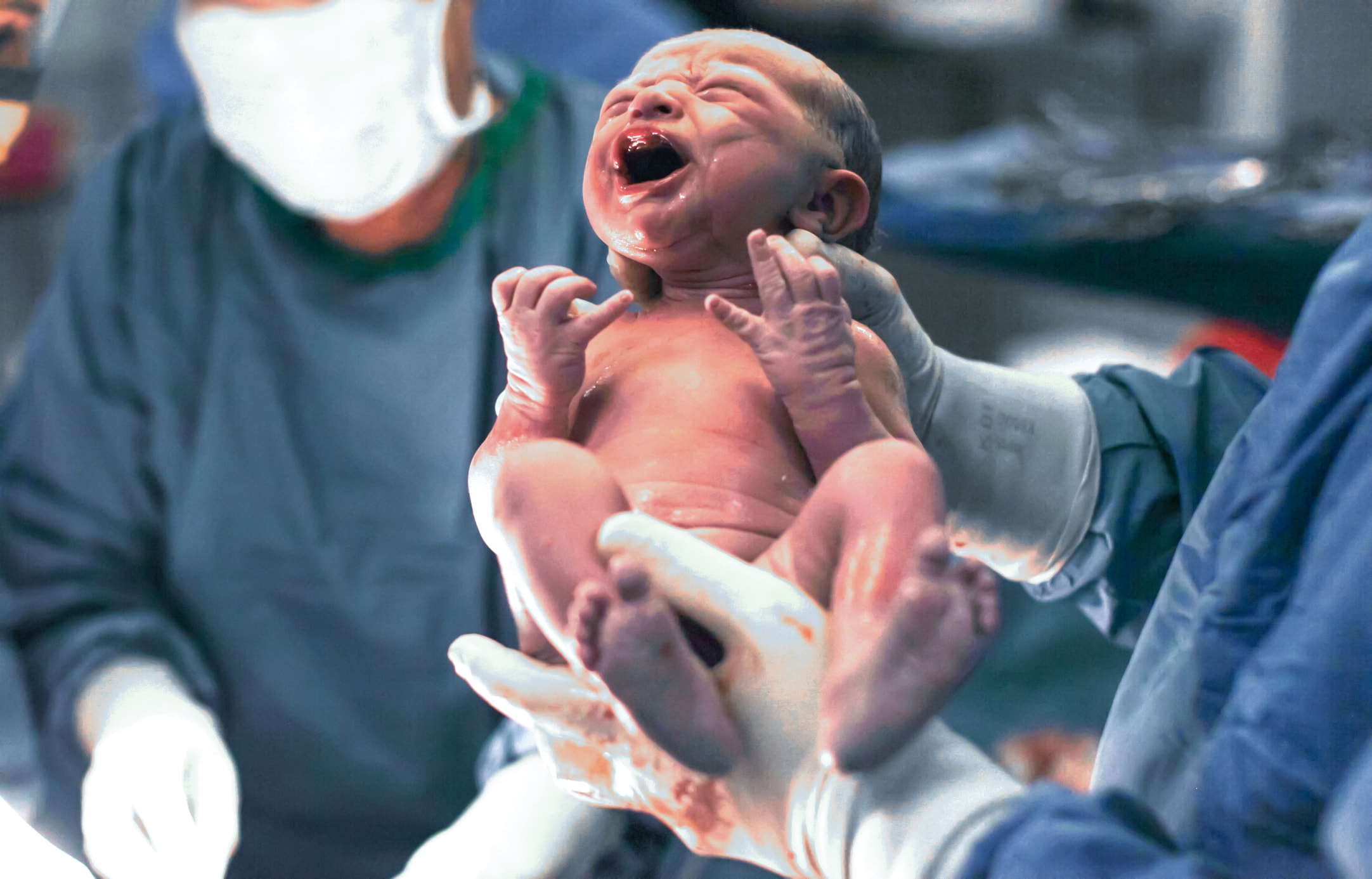Regardless of how connected you felt to your baby when you were pregnant, you were, literally, connected through the umbilical cord. Attaching your baby via her belly button to your placenta, the umbilical cord transported oxygen and essential nourishment she needed for growth. Once you gave birth, though, the umbilical cord was clamped and cut, leaving a small brownish, purpleish stump behind — but the work of caring for it wasn’t over.
From the proper way to clean the area surrounding the stump to signs of an umbilical cord infection, here’s everything you need to know about umbilical cord care.
Caring for baby’s umbilical stump
When it comes to caring for your baby’s umbilical cord stump, there are two things to keep in mind:
- Keep it clean.
- Keep it dry.
Really, that’s it!
“In the past, parents were told to apply alcohol to the umbilical stump to help keep it dry and to decrease the chance of infections, but research has shown that doing so does not reduce infections, so we no longer recommend it,” says Dr. Robin S. Jacobson, a pediatrician at NYU Langone Pediatric Associates.
Unfortunately, keeping baby’s umbilical cord stump dry means one of the most adorable milestones — baby’s first bath — will have to wait until the stump falls off.
“Parents can use a sponge or washcloth to clean their newborn’s body,” Jacobson says. “Simply clean over the umbilical stump and then pat it dry.”
Also, as tempting as it may be, resist the urge to touch or pull at the umbilical stump (even if it’s hanging by a thread!). Letting it dry up and fall off on it’s own is best.
When does the umbilical cord fall off?
For most babies, it happens between 1 and 3 weeks of life, but some can take a little longer. That said, if your newborn’s stump hasn’t dried up and fallen off by the time she’s 2 months old, the American Academy of Pediatrics recommends seeing your child’s doctor.
Signs of an umbilical cord infection
While rare, infections of the umbilical stump are serious, so it’s important to keep a close watch on the area when the stump is still present.
“Omphalitis is an infection of the umbilical stump and the surrounding skin,” says Dr. Nick DeBlasio, medical director of the Pediatric Primary Care Center at Cincinnati Children’s Hospital Medical Center.
Omphalitis is considered a medical emergency, and parents should seek medical attention immediately, he says.
Signs of this type of infection, says DeBlasio, may include:
- Red, tender skin in the area surrounding the umbilical stump.
- A foul odor and discharge coming from the stump.
- Oftentimes, a fever in your infant, as well.
DeBlasio also advises parents to be mindful of any odors or discharge coming from the stump — even if the area looks otherwise OK.
“Parents should call their child’s pediatrician if there is a foul odor coming from the umbilical stump,” he says. “As the umbilical cord dries up, there may be some discharge — sometimes even with a little bit of blood. But if the discharge persists for more than a few days, worsens, or develops a foul smell, have the pediatrician take a look at it.”
Umbilical hernia
One potential umbilical cord complication is an umbilical hernia, which presents itself as an abnormal bulge that’s seen or felt around baby’s belly button.
“Umbilical hernias occur when a child’s abdominal muscles don’t completely come together, so there’s little space for the bowels to come through,” says Jacobson. “The hernia can seem larger when the baby is crying or pushing during a bowel movement, because they’re exerting pressure on their abdomen.”
Jacobson notes that umbilical hernias occur in 10% to 20% of newborns and don’t usually cause problems for the baby.
“Most umbilical hernias — about 90% — will resolve themselves by 4 to 5 years of age,” Jacobson says. “If the hernia is still present after then, surgery will be required to repair it.”
Umbilical granuloma
Another possible umbilical cord complication is umbilical granuloma, which is when a small amount of scar tissue forms inside the belly button after the stump falls off. Typically, umbilical granuloma looks like a round, red lump inside the belly button, and on occasion, it can drain a light-colored fluid.
“Umbilical granulomas are common and easily treated at the pediatrician’s office,” says Jacobson. “Baby’s doctor can apply a 75% silver nitrate stick to the granuloma during the visit. If the granuloma doesn’t resolve after two to three silver nitrate treatments, there are some cases in which baby might need surgery to remove it.”
What to do when the umbilical stump falls off
Once your baby’s stump falls off, hooray! You can give her a proper bath, so long as there isn’t any redness or irritation. Simply wash your baby’s belly button with warm water, a wash cloth and mild soap and pat dry.
If you feel uncomfortable throwing your baby’s umbilical stump in the trash, you’re not alone. Some parents make the decision to save their baby’s stump as a keepsake. From having the stump sewn into a stuffed animal or lovey to simply storing it in a small decorative box, there are a number of creative options when it comes to saving baby’s umbilical stump.
“I buried my son’s umbilical stump in our back yard, and then we planted a tree on top it,” says Julie Stoughton, of Providence, Rhode Island. “My sister-in-law gave me the idea, and I loved the notion of my child always having roots here in the yard of our forever home.”





